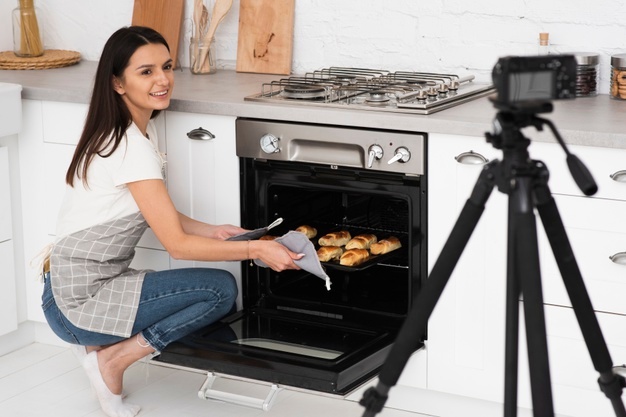How do commercial ovens work?
Commercial Ovens
A commercial oven is kitchen equipment used in a business context to cook and prepare goods. Business ovens are commonly seen in hotels, bakeries, and coffee shops.
This is because commercial ovens are built to manage vast quantities of various foods quickly. Business ovens come in a variety of shapes and sizes to meet a variety of requirements, including the deck, combination, and pizza ovens.
They can be fuelled by gas, wood, or electricity, and they usually cook using convection. When buying an oven for a business kitchen, the first thing to remember is that home ovens can be forgotten right away. Domestic ovens are ideal to be used in the home. However, these are almost less powerful than industrial ovens, and are usually only utilized once or twice a day in general. Domestic ovens will not work continuously throughout the day and will need to be replaced far more often than business ovens.
Furthermore, domestic ovens are often smaller than commercial ovens, and will not be able to handle enough food at one time to keep your kitchen running efficiently. Convection baking is more common in commercial ovens than traditional baking. Although both kinds of ovens use heating components to emit heat, a convection oven also employs a fan. This fan aids in cooking food equally and rapidly, two qualities that chefs and bakers value highly. Bakery Rack
Oven can be single or double layered and professionally installed.
Ovens at bakeries are substantially larger than those in homes. This sort of oven is made to cook a massive number of bakery items at once. It can usually accommodate many full-size baking trays at once.
Why buy a commercial oven?
There are some features of the commercial oven on the basis you can buy these commercial ovens. These commercial ovens are built with heavy-strength power lines, commercial standard circuits, and overload switches. They are more durable and easy to operate. County health inspectors and fire insurance plans both demand commercially approved ovens.
Types and work of Commercial Oven
Standard Ovens
The most basic type of commercial oven is the standard oven. A conventional oven, sometimes referred to as a " radiant oven," has a heating component in the bottom of the unit that conducts heat into the oven's body. Almost any recipe that calls for the use of an oven may be cooked in a standard oven. Furthermore, they are the least priced and easiest to fix type of oven. Traditional ovens, on the other hand, have a propensity to make meals gradually and unevenly due to the variable character of thermal radiation if the oven temperature is not adjusted high enough.
Convection Ovens
Convection ovens are fairly comparable ovens, with one main exception: airflow. Convection ovens have fans built into their bodies that flow heated air throughout the oven. Food can be prepared faster (more excellent airflow encourages quicker heat transfer), more reliably, and at a lower pressure than traditional ovens. Circulation of the air in the oven also stops hot or cold areas from forming,
resulting in a more stable cooking temperature and much more uniformly cooked food. Convection ovens have become the standard in most commercial kitchens due to their dependability and adaptability.
Deck Ovens
Deck ovens are distinguished from regular radiant ovens by the presence of a substantial granite shelf, or " deck," at the bottom of the unit. The stone shelf is preheated, and food is placed directly on the stone to cook. Deck ovens are ideal for kitchens that produce a high volume of bread-related items (such as pizza businesses and bakeries), as the stone deck gives loaves of bread a typical "hearth" the character that other types of ovens struggle to replicate. Deck ovens are great for cooking pizzas and other similar foods, but they aren't as well-suited for basic baking. The stone shelf takes a long time to heat up, and as food wicks heat away from the surface, cold spots will form, requiring the stone to be reheated to its original temperature in between batches of food. Furthermore, not all items may be prepared directly on the rock.
Conclusion
At last, we concluded that using the commercial oven will benefit your business.



Comments
Post a Comment